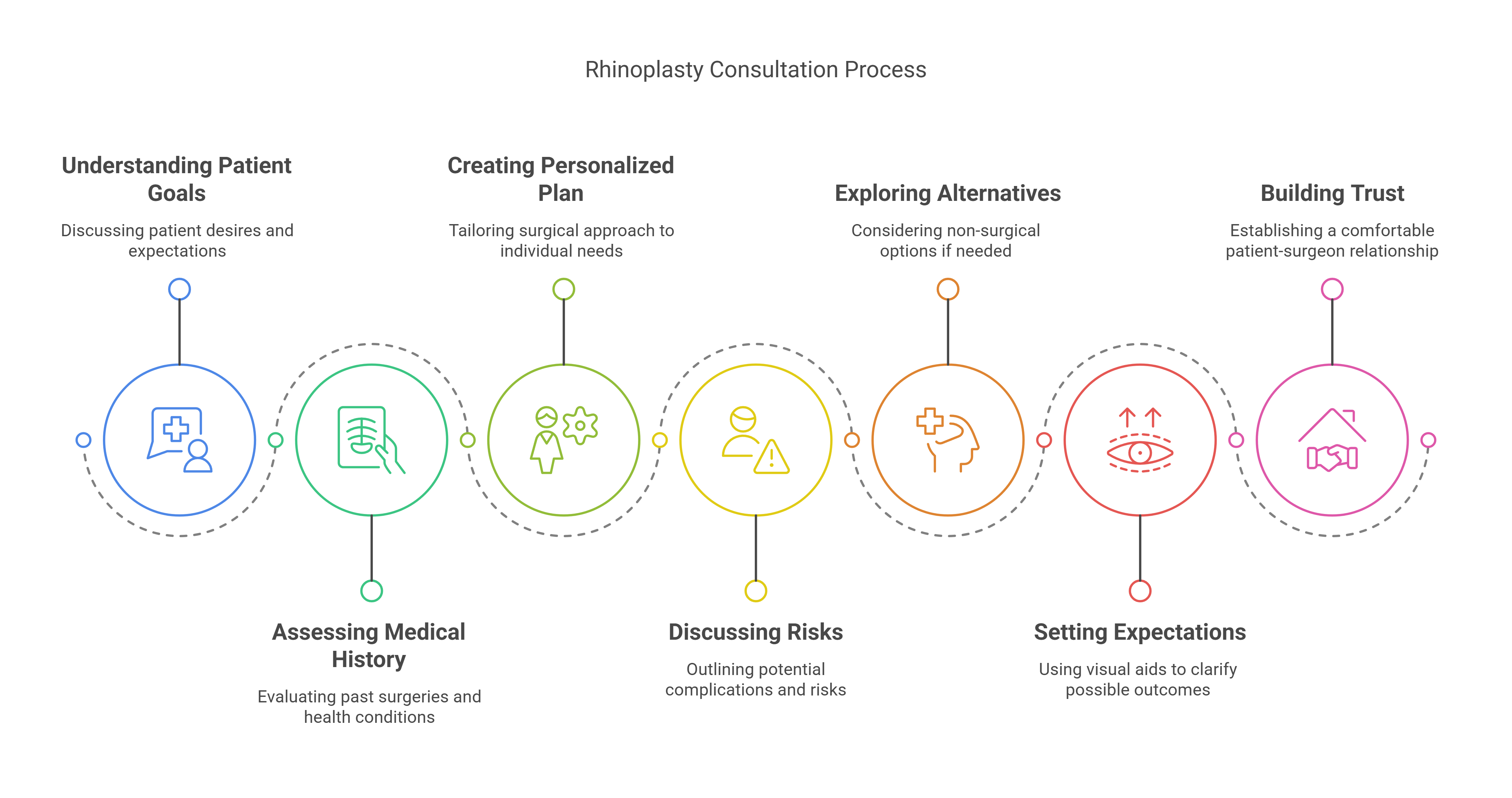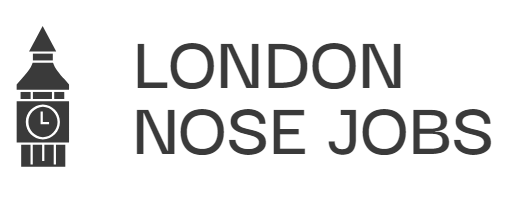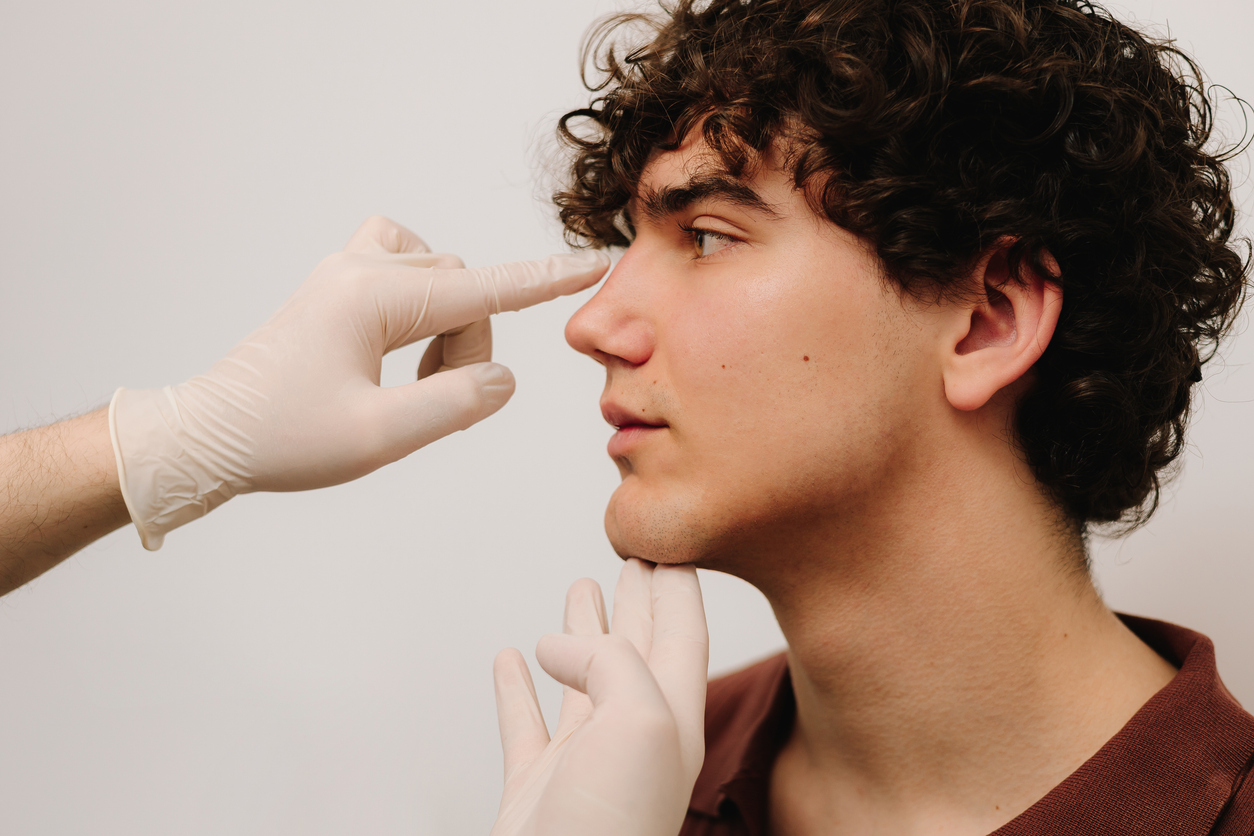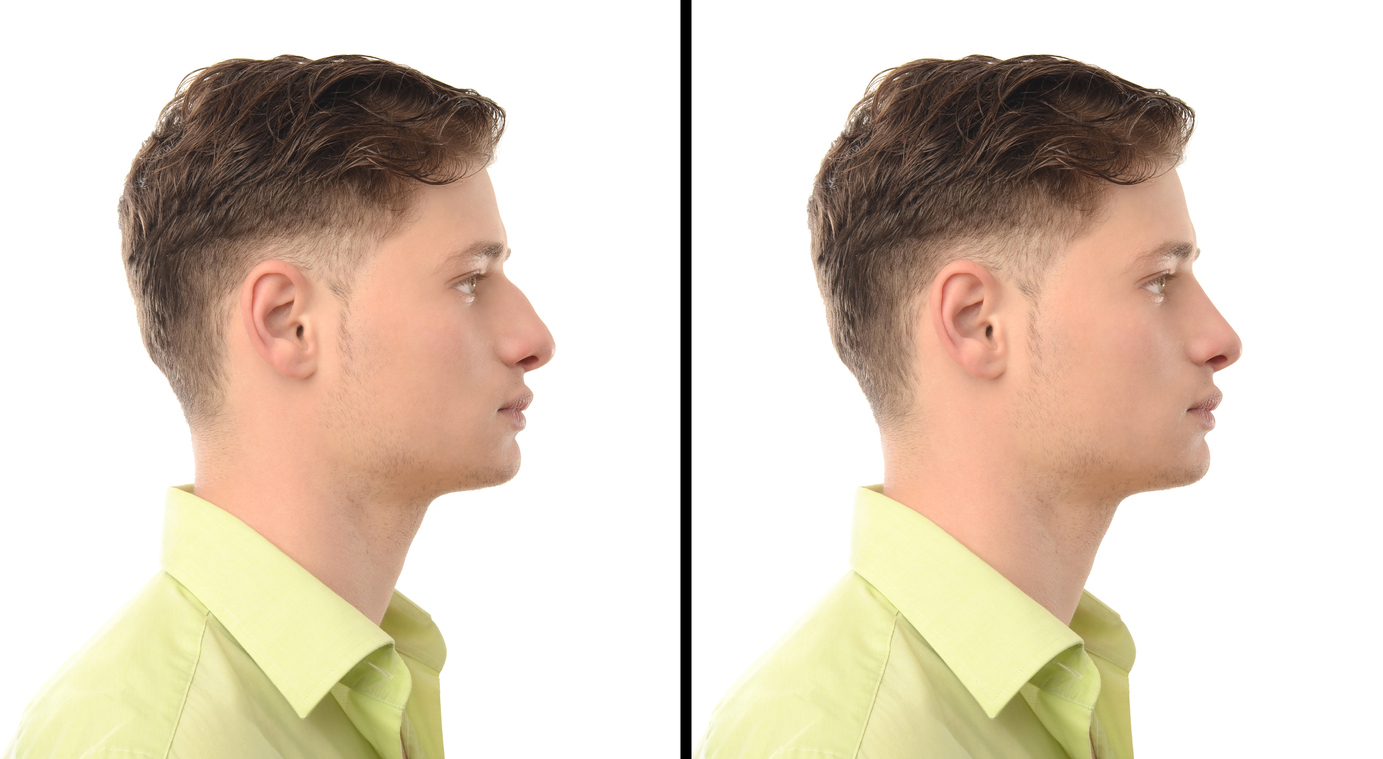Ever wondered how a subtle change to your nose could transform your entire look? For many men, nose reshaping isn’t just about aesthetics—it’s about boosting confidence, enhancing facial harmony, and achieving a more defined, masculine appearance. Modern techniques in rhinoplasty and non-surgical nose jobs make it easier than ever.
But is nose reshaping the right choice for you? Let’s dive into the possibilities, benefits, and what every man should know before taking the plunge.
Key Takeaways
- Nose reshaping can boost self-confidence and improve facial harmony.
- It’s essential to choose a surgeon with experience in male rhinoplasty for the best outcomes.
- Recovery from surgery typically takes about 6-8 weeks, with full results visible after a year.
- Non-surgical options like fillers are available but have limitations compared to surgical methods.
- Understanding your goals and discussing them with your surgeon is key to achieving the desired look.
Understanding Nose Reshaping for Men
Definition of Nose Reshaping
So, what exactly is nose reshaping, or rhinoplasty, for men? Well, in simple terms, it’s a surgical procedure designed to alter the shape and size of the nose. It’s not just about making the nose smaller; it’s about creating a nose that’s in proportion with the rest of your face, maintaining a masculine aesthetic.
The goal is to achieve a natural-looking result that enhances your overall appearance. It can involve adjusting the bone, cartilage, and skin to achieve the desired outcome. It’s worth noting that rhinoplasty can also address functional issues, such as breathing problems caused by a deviated septum.
Common Reasons for Seeking Surgery
Why do men consider nose reshaping? There are loads of reasons, really. Some blokes might have had an injury that’s left their nose crooked or misshapen. Others might just be unhappy with the way their nose looks naturally – maybe it’s too big, has a bump, or the tip droops.
And it’s not always about vanity; sometimes it’s about fixing breathing problems. A deviated septum, for example, can make it hard to breathe properly, and rhinoplasty can correct that. Ultimately, it’s a personal decision, and the reasons are as varied as the individuals considering it.
Here’s a quick rundown of common reasons:
- Correcting deformities from injury
- Improving breathing difficulties
- Reshaping a nose that’s out of proportion
- Boosting self-confidence
The Impact on Self-Confidence
Let’s be honest, how you feel about your appearance can have a big impact on your self-confidence. If you’re self-conscious about your nose, it can affect how you interact with people and how you feel about yourself in general.
Nose reshaping can be a game-changer for some men, giving them a real boost in self-esteem. It’s not just about looking better; it’s about feeling better. When you’re happy with your appearance, you tend to be more confident and outgoing. It’s about feeling comfortable in your own skin, and sometimes, a little tweak can make all the difference.
It’s important to have realistic expectations. Nose reshaping can improve your appearance and boost your confidence, but it won’t solve all your problems. It’s just one piece of the puzzle.
The Surgical Process

So, you’re seriously considering going under the knife for a nose job? It’s a big decision, no doubt. Let’s break down what actually happens during the surgical process, from the initial chat with your surgeon to what you can expect after the operation. It’s good to know what you’re getting into, right?
Consultation and Assessment
First things first, it’s important to have a professional consultation. This isn’t just a quick chat; it’s where you and the surgeon get on the same page. They’ll want to know exactly what you’re hoping to achieve, and they’ll assess your nose – the structure, skin, all of it. They might even take some photos. This is the time to be completely honest about your expectations and any concerns you have.
- Medical history review
- Physical examination of the nose
- Discussion of desired outcomes
Types of Surgical Techniques
There isn’t just one way to reshape a nose. Rhinoplasty techniques vary depending on what needs doing. There’s ‘open’ rhinoplasty, where the surgeon makes a small cut across the columella (the bit between your nostrils), and ‘closed’ rhinoplasty, where all incisions are made inside the nose. Each has its pros and cons, and the best one for you depends on the complexity of the changes you want.
The surgeon will explain which technique they recommend and why. Don’t be afraid to ask questions until you fully understand the approach.
Post-Operative Care
Okay, surgery’s done. Now comes the recovery. You’ll likely have some swelling and bruising, which is totally normal. You might also have a splint or cast on your nose for about a week to protect it. Painkillers will help with any discomfort. It’s important to follow your surgeon’s instructions to the letter – that means keeping your head elevated, avoiding strenuous activity, and attending all follow-up appointments.
Here’s a quick rundown:
- Pain management
- Wound care
- Follow-up appointments
Non-Surgical Alternative to Nose Reshaping
So, you’re thinking about changing your nose but the idea of surgery makes you nervous? Good news! There are non-surgical options available. They’re not going to give you the same results as a full rhinoplasty, but they can be a good alternative for minor tweaks. Let’s have a look at what’s on offer.
Overview of Non-Surgical Options
If the thought of surgery makes you hesitant, but you’re still looking for a way to enhance the shape of your nose, suture lifts might just be the perfect middle ground. Unlike rhinoplasty, which involves incisions and a lengthy recovery, a suture lift is a minimally invasive procedure that uses fine threads to subtly lift and reshape the nose—without ever going under the knife.
How Does It Work?
This procedure involves placing fine medical-grade threads strategically under the skin to lift, contour, and reshape the nose. These threads provide immediate structure while also stimulating collagen production, ensuring that the results improve over time.
There are two main types of suture lifts:
- Dissolvable Threads (PDO, PLLA) – These threads naturally break down in the body over time, typically lasting 12-18 months before needing a touch-up. They’re ideal for those looking for a temporary enhancement with collagen-boosting benefits.
- Non-Dissolvable Threads (Silicone, Polypropylene) – These provide longer-lasting support and can be adjusted or removed if needed. They’re best for more defined, long-term reshaping without committing to full surgical rhinoplasty.
Why Consider a Suture Lift?
- Non-Surgical & Minimally Invasive – No incisions, no scars, and minimal downtime.
- Quick & Convenient – The procedure takes under 30 minutes, making it a true “lunchtime nose job.”
- Customizable Results – Choose between temporary or long-term solutions based on your preferences.
- Little to No Downtime – Most people return to normal activities immediately after the procedure.
Limitations and Considerations
While suture lifts can refine and elevate the nose, they cannot reduce the overall size or make dramatic structural changes like rhinoplasty. Also, dissolvable threads require maintenance over time, while non-dissolvable ones should only be placed by highly skilled practitioners to avoid complications.
Choosing the Right Surgeon
Finding the right surgeon for your nose reshaping procedure is, without a doubt, one of the most important decisions you’ll make. It’s not just about qualifications; it’s about finding someone you trust and who understands your goals. Let’s break down what to look for.
Importance of Experience
When it comes to nose reshaping, experience really does matter. You want a surgeon who has performed a significant number of rhinoplasty procedures. It’s not just about the years they’ve been practising, but the volume and variety of cases they’ve handled.
A surgeon with extensive experience is more likely to have encountered and successfully managed different challenges that can arise during surgery. Look for surgeons who are on the specialist register in the UK and have proper certification; this means they’ve met specific standards. Also, seeing before-and-after photos can give you a sense of their aesthetic style and skill.
Questions to Ask During Consultation
Your consultation is your chance to interview the surgeon. Don’t be shy about asking questions. Here are a few to consider:
- What are your qualifications and experience specifically in rhinoplasty?
- Are you a member of any professional associations (like BAAPS or BAPRAS)?
- How many nose reshaping operations have you performed?
- What is your approach to achieving natural-looking results?
- Can I see before-and-after photos of your previous patients?
It’s also a good idea to ask about potential risks and complications, and how they handle them. A good surgeon will be upfront and honest about the potential downsides, as well as the benefits.
Understanding the Surgeon’s Approach
Every surgeon has a slightly different approach to nose reshaping. Some are more conservative, aiming for subtle changes, while others might be more willing to make dramatic alterations. It’s important to find a surgeon whose aesthetic aligns with your own. During your consultation, pay attention to how well they listen to your concerns and how clearly they explain their proposed surgical plan. Do they take the time to understand your goals, or do they seem to have a one-size-fits-all approach? Ultimately, you want a surgeon who is willing to work with you to achieve the best possible outcome.
Expected Outcomes and Recovery
What to Expect After Surgery
Alright, so you’ve decided to go for it. What’s next? Straight after the surgery, expect some swelling and bruising. It’s totally normal, so don’t freak out. You’ll probably have a splint and some packing inside your nose to support it while it heals.
Breathing might be a bit difficult through your nose at first, but that’s temporary. Pain is usually manageable with medication. Just follow your surgeon’s instructions, and you’ll be fine.
Timeline for Recovery
Okay, let’s break down the recovery timeline. Everyone heals at their own pace, but here’s a general idea:
- First Week: Splint stays on. Expect the most swelling and bruising. Take it easy!
- Two Weeks: Splint comes off. Swelling starts to go down, but it’s still there.
- One Month: Most of the visible swelling is gone. You can usually get back to most of your normal activities, including exercise, but check with your surgeon first.
- Six Months to a Year: The final results are really starting to show. Any remaining swelling is usually very subtle.
Long-Term Results and Maintenance
So, you’ve made it through the recovery – congrats! The good news is that nose reshaping results are generally permanent. However, your nose can still change a bit over time due to ageing. There isn’t really any specific maintenance required, but protecting your nose from injury is always a good idea. If you’re happy with the results, that’s all that matters!
It’s important to have realistic expectations. While nose reshaping can make a big difference, it’s not going to completely transform your life. It’s about improving your appearance and boosting your confidence, not achieving perfection.
Enhancing Masculinity Through Nose Reshaping
Balancing Facial Features
It’s all about getting the proportions right, isn’t it? A nose job isn’t just about making your nose smaller or straighter; it’s about ensuring it fits with the rest of your face. Think of it like tailoring a suit – it needs to complement your build. The goal is to create a harmonious balance, so your nose doesn’t overpower your other features. It’s about subtle adjustments that make a big difference.
Maintaining Masculine Proportions
Men’s noses tend to have different angles and shapes compared to women’s. We’re talking about a straighter bridge, a stronger tip, and avoiding that ‘button nose’ look. It’s about keeping things looking natural and, well, manly. The surgeon needs to understand these differences to deliver results that look right.
Addressing Common Concerns
Loads of blokes worry about a bump on the bridge, a droopy tip, or a nose that’s just too big. These are common issues that a nose job can sort out. It’s not just about looks, either. Sometimes, it’s about fixing breathing problems caused by a wonky septum. It’s all about finding a solution that works for you.
I reckon the best way to think about it is this: a good nose job should make you look like a better version of yourself, not someone else entirely. It’s about subtle tweaks that boost your confidence without making you look like you’ve had ‘work done’.
Conclusion
Nose reshaping for men is about enhancing facial harmony, boosting confidence, and sometimes even improving breathing. Consulting with a qualified surgeon who understands the unique aspects of male facial structure is crucial.
Remember, this journey is about you and what makes you feel comfortable in your own skin. Don’t hesitate to explore your options and ask questions. With the right guidance, you can achieve the look you desire and feel more confident in your everyday life.
Frequently Asked Questions
Frequently Asked Questions
What is nose reshaping for men?
Nose reshaping, often called a nose job, is a surgery that changes the shape of the nose. This can help improve how it looks or fix any breathing problems.
Why do men consider nose reshaping?
Men might want nose reshaping to fix things like a bump, to make their nose smaller, or to correct issues from an injury. It can also help boost their confidence.
How long does recovery take after nose surgery?
Most people take about 6 to 8 weeks to recover from nose surgery. It can take up to a year to see the final results.
Are there non-surgical options for reshaping a nose?
Yes! There are non-surgical options like fillers that can change the shape of the nose without surgery. However, these results are temporary.
What should I look for in a surgeon?
It’s important to choose a surgeon who has a lot of experience with nose surgery. You should ask about their past work and how they plan to approach your surgery.
Will reshaping my nose change my appearance?
Yes, reshaping your nose can change your look. Many men find that it enhances their facial features and makes them feel more confident.






